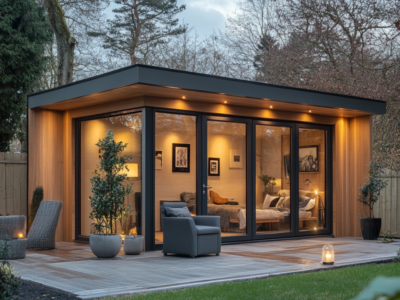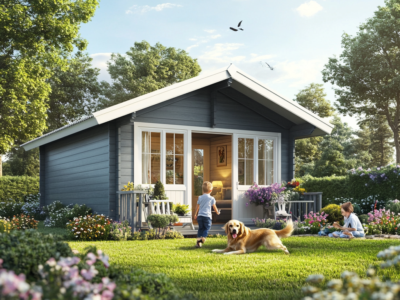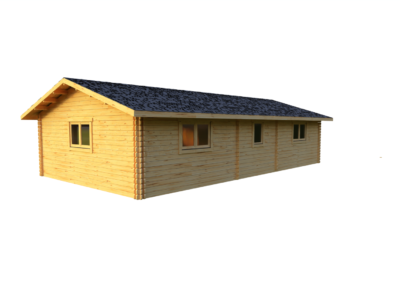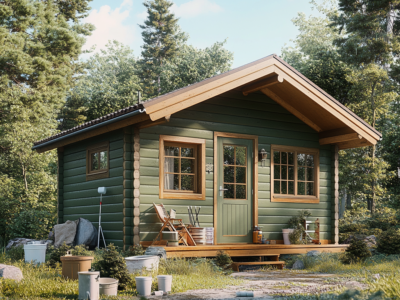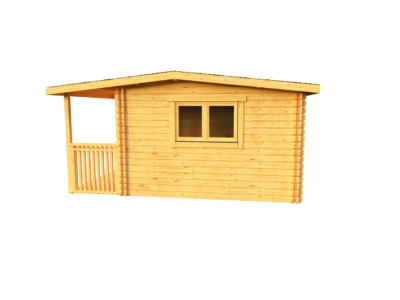Garden buildings provide an idyllic space for relaxing or hosting outdoor gatherings, typically larger than sheds with windows that let in natural light.
Green design includes insulation that provides a comfortable temperature without excessive energy use, as well as prioritizing renewable sources to decrease fossil fuel dependency.
Consider Your Microclimate
Microclimate refers to the climate immediately surrounding your home or garden room and can have a substantial effect on its energy efficiency and comfort. Topography, vegetation, surface materials and bodies of water all play an influential role.
Homes built on sunny southern slopes often enjoy warmer microclimates than homes located in cooler regions, while those featuring well-placed shade trees may create an ideal cooler microclimate. Furthermore, nearby bodies of water can increase humidity levels in your landscape and help regulate air temperatures.
Buildings account for an enormous percentage of energy use and greenhouse gas emissions, so designing structures in an eco-friendly manner is increasingly crucial. By adopting sustainability into your garden room design, not only will you reduce your environmental impact but it could save money on energy costs as well.
One way to make your garden room more energy efficient is to install solar panels. Solar energy captures sunlight and converts it to electricity that can power lighting, appliances and other features in the room – saving both electricity and money! Solar panels can capture these rays year-round; helping lower electricity bills year-round!
Insulating your garden building properly is another effective way to increase its energy efficiency, keeping heat from escaping during the winter and keeping you cool in summer. There are various insulation materials, such as wool and cellulose insulation materials with low environmental impacts which will ensure you remain comfortable all year round in your garden room.
Install a green roof on your garden building for added insulation and plant cover, plus absorb rainwater for irrigation of nearby plants.
Study findings indicate that rooftop gardens offer significant thermal and harvest advantages compared to hard concrete roofs. Gardens can modify building microclimate through convection, scattered radiation and evapo-transpiration processes that lead to energy savings as well as improve indoor air quality and help prevent mold growth.
Insulate Your Walls
Insulation protects structures against extreme temperatures and cold, damp, mold and condensation – providing your garden office with the ideal environment to work or play in, while prolonging its longevity and cost-efficiency. When selecting insulation materials for your prefab garden room make sure that it suits your budget, size requirements, building control regulations as well as ease of installation – foam boards, fiberglass batts or spray foam may be easy DIY installations while mineral wool may need professional installation for optimal performance.
Insulation is essential to keeping a garden room comfortable and energy costs under control, thus saving money while creating an energy-efficient space. Cavity wall insulation is an easy and cost-effective solution to achieve energy-efficiency in any room – not to mention providing energy savings through lower energy bills!
Proper ceiling insulation not only reduces thermal loss, but it can also prevent water intrusion into your garden room and improve usability. Furthermore, proper insulation serves as an effective acoustic barrier preventing sound transmission while simultaneously increasing privacy levels and helping you to save on heating/cooling bills all year round.
An insulated garden room can be enjoyed year-round regardless of weather conditions, providing comfort in both winter and summer by using high-grade insulation materials and double-glazed windows to minimize heat loss in winter while keeping temperatures cool in summer. Renewable energy sources like solar panels or wind turbines may even meet your power needs more cost effectively and save on energy bills.
Green roofs can help your garden room become more energy efficient by naturally reducing energy bills and contributing to biodiversity. Furthermore, they offer a green alternative to toxic traditional roofing materials which may wreak havoc on the environment – when selecting roof material make sure it comes from local sources or is recycled to minimise environmental impacts and promote sustainable building practices.
Install Solar Panels
Combining solar panels with high-performance wall insulation and double-glazed doors will make your garden room both energy efficient and cozy. Solar power allows you to run lights, small appliances and charge batteries without using fossil fuels – not to mention its many financial benefits! Solar power demonstrates your commitment to sustainable living while enjoying modern conveniences in your garden shed or summerhouse.
Installing solar panels in garden rooms is generally a quick and minimally invasive process, depending on their size. When working with a qualified MCS (Microgeneration Certification Scheme) solar installer to design your energy goals and the size of your garden building. Once designed, solar panels must be properly positioned to capture sunlight; cleaning them regularly ensures optimal performance.
Rooftop solar PV systems may be ideal for garden rooms, but ground-mounted solar panels may offer an appealing and effective alternative. While ground-mounted systems cost approximately 25% more than rooftop systems and require significant ground preparation in order to prevent soil erosion or shading by nearby trees or buildings.
Wall-mounted solar panel systems may provide an excellent alternative to ground or roof-mounted systems if your boundary wall faces south. Wall-mounted systems tend to perform best when mounted flush with the wall at an angle so as to maximize sunlight exposure, though their energy production won’t match that of rooftop systems during winter months; nonetheless they still produce enough to help lower energy costs and save on energy bills.
For any solar power system for a garden shed or summerhouse, it’s essential to assess how many devices will need powering as well as their average wattage usage. A solar expert will then help determine the voltage and wattage requirements of each piece of equipment to help select an appropriate system. Furthermore, adding batteries will store any energy generated throughout the day for use at night time as well as increase overall costs.
Collect Water
As buildings represent an enormous share of global energy consumption and greenhouse gas emissions, designing your garden room to promote maximum sustainability is vitally important. This can be accomplished by selecting eco-friendly materials, prioritising renewable energy sources and installing energy-saving features into its design.
Effective insulation is key to creating a sustainable garden building, helping maintain an ideal temperature all year round without overusing heating and cooling systems. When selecting materials for your office or playroom design, choose eco-friendly cladding and insulation from local suppliers in order to minimise transportation impact while stimulating circular economies. Furthermore, double-glazed windows and doors are proven energy savers, as they lower energy bills while decreasing roof heat loss significantly.
Rainwater harvesting systems are another great way to lower water usage; these capture and store rain for later use as garden irrigation water, or grey water (decontaminated household appliances’ waste water filtered to remove harmful contaminants) can also be reused as gardening water. Utilizing such systems reduces demand on existing infrastructure as well as alleviating pressure off drainage/storm water systems – however installation costs and storage fees often outweigh financial benefits.
Finally, investing in a green roof could provide insulation benefits, lower energy bills and improve air quality while simultaneously supporting biodiversity through photosynthesis and decreasing carbon dioxide levels.
Install a water butt or rain barrel as another way of minimizing freshwater consumption. These storage units collect rainwater collected from rooftops or sheds and store it for later use – many claim this water can safely water plants; however, rainwater could contain animal bacteria as well as chemicals from roofing shingles that could make drinking unsafe; it should therefore only be used non-drinking purposes or when close to another water source in the garden.

